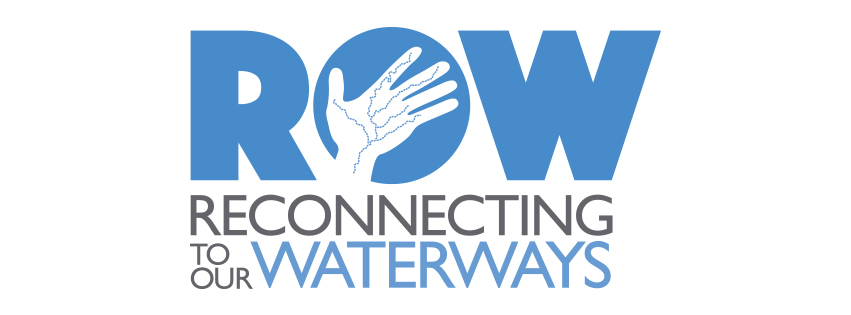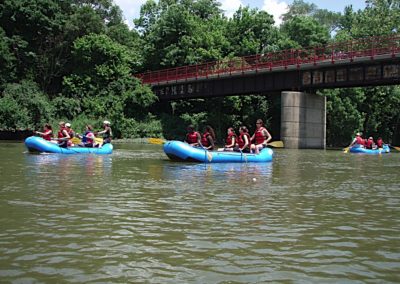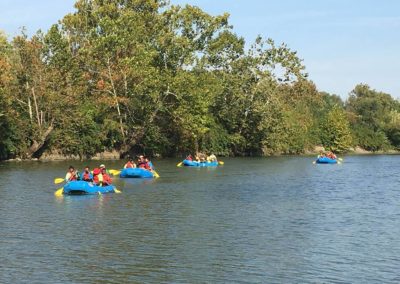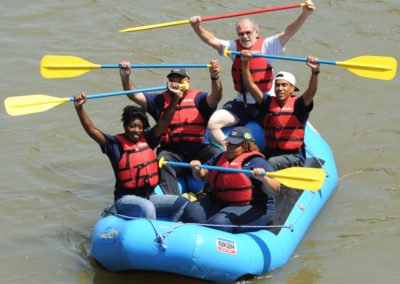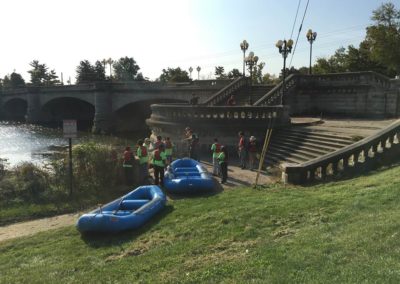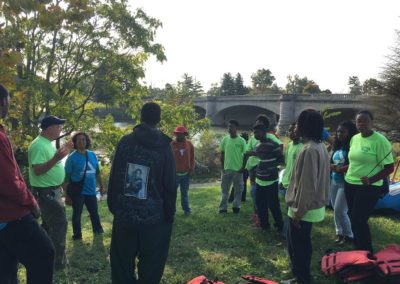Once an urban attraction area, the Northwest stretch of Indianapolis’ Central Canal has been forgotten and neglected over the past half-century. Reconnecting to Our Waterways is working with neighborhood residents to turn this beautiful urban corridor in the middle of Indianapolis into an amenity and reconnect the community with the waterway safely.
Water murmuring, insects buzzing under the warm sun. Along Indianapolis’ Central Canal, ducks and geese are one of the few witnesses along the quiet Northwest stretch of the Canal, where thick trees and vegetation offer peace in the center of the city.
Reconnecting to Our Waterways, a collective impact organization, works with residents to better connect them to their waterways
“The end goal for this project is for the Canal to re-enter the life of the people in the community. The Canal and the bridges are really beautiful, but you wouldn’t know it if you didn’t actually walk by it and take your time.”
Phyllis Boyd, Groundwork Indy
To start, Reconnecting to Our Waterways formed a Canal committee, comprised of passionate individuals and representatives from stakeholder groups, to listen to the neighborhood and identify needs and opportunities
“Once we started listening to neighbors at the Northwest Quality of Life meetings and Riverside meetings, we really heard a lot about what the neighbors wanted to see and the neighbors’ perceptions of the canal.”
MJ Meneley, Hitchcock Design Group
After observing the canal and surrounding areas, the committee formed a focus around the Northwest stretch of the Canal between 30th St. and Fall Creek. The Central Canal, built between 1836 and 1839, has a pedestrian towpath stretching for 5.23 miles.
Historically a key part of the city’s development, the adjacent Riverside neighborhood struggled in the postwar era, with gradual population declines and poverty increases due to structural racism in the form of disinvestment and redlining. Between 1950 and 1960, Riverside became a predominantly African-American neighborhood as whites elected to move farther out rather than live in proximity to African-Americans. During the 60’s and 70’s, St. Vincent relocated, Riverside Amusement Park closed, and hundreds of homes were destroyed and neighborhoods were gutted to make way for I-65’s construction.
The Riverside Amusement Park was one of the city’s main summer attractions for six decades with rides, swimming, and boating. African-Americans were not allowed into the amusement park except for one day each year and instead utilized the Central Canal as a place of recreation. This history of segregated swimming and lack of access to public pools is thought to contribute to the current trend of 70% of African-American children not being able to swim. The risk of African-American children dying by drowning remains significantly higher than their white and Hispanic counterparts. In Indianapolis, schools starting and pools closing in early August pose a unique challenge of recreation during one of the hottest months of the year. When local youth turn to the waterways to cool off, it can turn deadly.
Reconnecting to Our Waterways worked with many community partners and residents to develop a multi-faceted plan on how to make the Canal a community asset:
- Maintain the canal banks, keeping it clear and safe as a pedestrian walkway
- Institute “Make a Splash” classes through Indy Parks and the USA Swimming Foundation, offering free water safety and survival classes for kids, youth, and parents
- Make the waterway a destination by launching an art installation called “Perceptions,” paying local artists to paint reclaimed doors that will be installed in a labyrinth style by the canal in spring 2017
- Host “River School,” a free educational experience that takes local residents out on the waterway to learn about it
Friends of White River extended the effort to make people comfortable around and connected to water by creating River School, which takes residents in large rafts down the White River. During these activities, participants are educated on water safety and ways to use the waterways for recreation and leisure. The floats also serve as an opportunity to talk about ecology, health and stewardship of the waterways.
Kevin Hardie, Executive Director of Friends of the White River, which organizes River school, describes the program:
“We put people in livery-grade white-water rafts to get them right on the waterway and let them get a comfort level with knowing that the water is something valuable and safe. The small group size allows us to explain the resource, what they’re seeing and how they’re a part of it, and let them get a comfort level with letting them know that the water is something that’s going to be of value—60% of our drinking water supply comes from White River via the Canal.”
Kevin Hardie, Friends of the White River
Montell Hendricks, the Youth Program Coordinator for Groundwork Indy, leads youth and young adults in doing invasive plant removal along the Canal and other parts of the city. In the fall of 2016, he was able to take part in River School along with a group from the Riverside neighborhood.
During the two-hour float, the group learned about the history of the White River, wildlife, and even what fish are safe to catch and eat.
“The youth did really well and they enjoyed it. There were a few people who were a little nervous being on the water because they can’t swim well. Once we all got out there and started doing group activities and getting into conversations, they really enjoyed it.“
“Growing up in Indy and walking around the canal downtown was the only exposure I had before working here. Most people don’t know that the canal is accessible. I always thought that it was blocked off and overgrown, and that it might be trespassing if I were to go down there.”
Montell Hendricks, Groundwork Indy
Through ROW Kresge funding, Groundwork Indy’s Green Team and GroundCorp youth employment programs partnered with Citizens Energy to improve the quality of the waterway through cleanups and habitat restoration. Citizens provided $25,000 in services to kick-start the restoration work and ensure it doesn’t easily become overgrown.
Residents can look out for the return of River School, the launch of Make a Splash classes, and the installation of “Perceptions,” the doors art installation, in spring 2017.
Earl Townsend, community organizer and “Perceptions” artist says,
“This area of the canal isn’t forgotten. It’s still rich; it’s still historic; it’s still full of talented, hard-working people. We just want people to realize that this is a place that is worth investing in and is worth being involved in—we love it here.”
